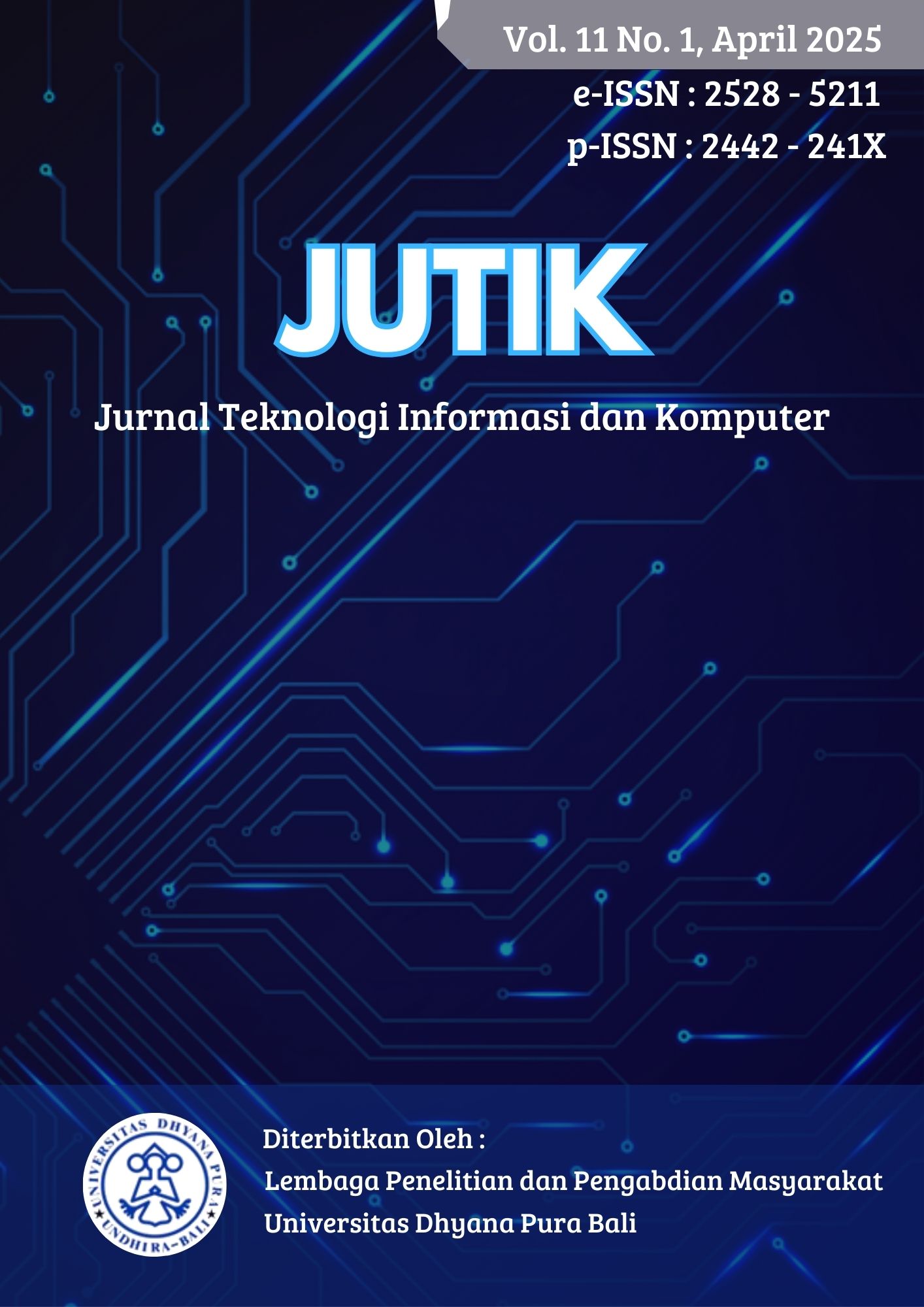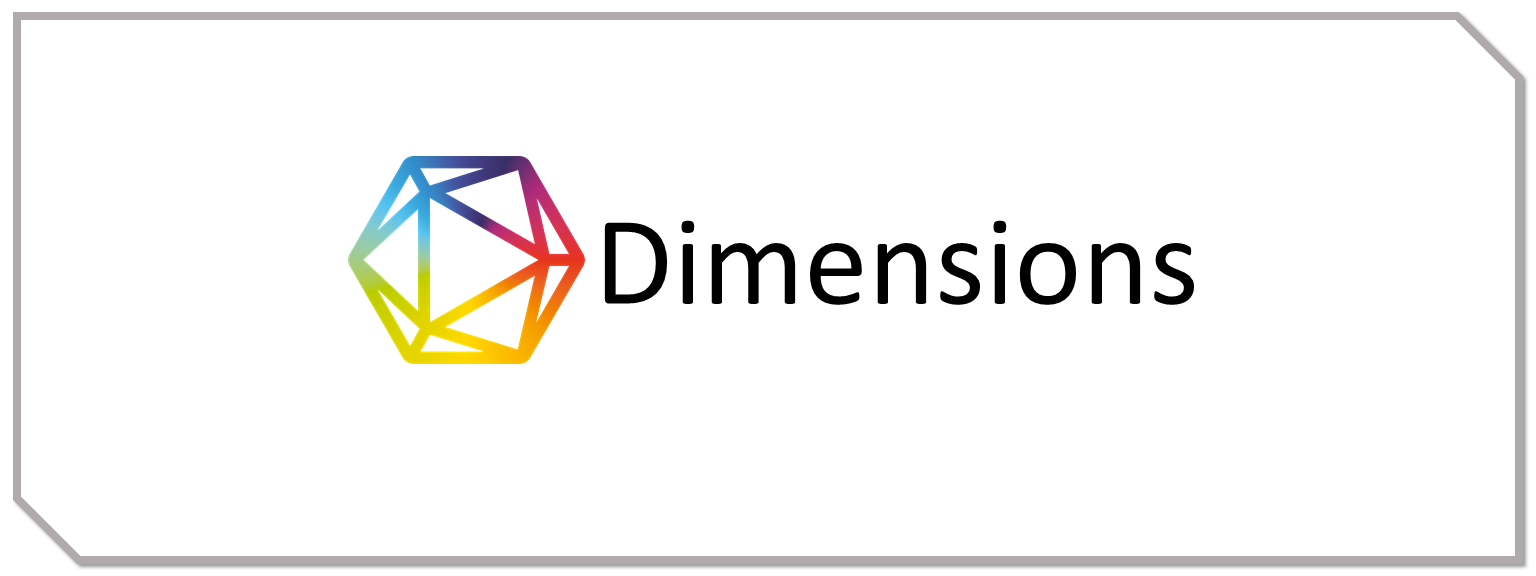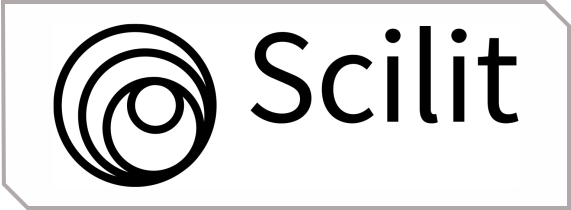KLASIFIKASI PRESTASI AKADEMIK PESERTA DIDIK DENGAN METODE MACHINE LEARNING DI SMP X
DOI:
https://doi.org/10.36002/jutik.v11i1.3751Keywords:
Academic Achievement, Classification, Machine Learning, LearnersAbstract
Machine learning (ML) is a field of science that focuses on designing and developing algorithmic models to create behavior based on available data. Academic achievement is a metric used for the assessment of quality educational institutions. By using academic data of students in SMP X and machine learning classification algorithms such as Random Forest, Naïve Bayes, k-Nearest Neighbors (k-NN), and Support Vector Machine (SVM), so that this research can classify the academic achievement of students in SMP X optimally seen from the comparison of the best accuracy rate among classification algorithms. The accuracy of an algorithm is a measure of how precisely it classifies a sample. Evaluation results are compared in the form of validation accuracy and standard deviation. The comparison is done to determine the best algorithm based on accuracy and stability. The results showed that the SVM algorithm has the highest validation accuracy with a value of 0.987410 which shows the best performance in predicting classes and the lowest standard deviation value of 0.005132 which shows a more stable and consistent performance, compared to other algorithms. This indicates that SVM excels in predicting the correct class with stable performance. Based on the results and analysis, it is concluded that the selected SVM algorithm is used to develop a classification model of students' academic achievement in the form of a python program that is still simple but has high accuracy, stable and consistent. This program has become a tool for SMP X in identifying students' academic achievement and as a material for reporting students' learning outcomes to parents.
References
I. Oktadiani, H. Fitriawan, M. Nurwahidin, and Herpratiwi, “Penerapan Machine Learning Untuk Prediksi Masa Studi Mahasiswa di Perguruan Tinggi X,†Jurnal Rekayasa dan Teknologi Elektro, vol. 17, no. 3, pp. 242–252, Sep. 2023.
A. F. A. Naibaho and A. Zahra, “Prediksi Kelulusan Siswa Sekolah Menengah Pertama Menggunakan Machine Learning,†Jurnal Informatika dan Teknik Elektro Terapan, vol. 11, no. 3, pp. 267–281, Aug. 2023, doi: 10.23960/jitet.v11i3.3056.
E. P. Saputra, M. Maulidah, N. Hidayati, and A. Saryoko, “Komparasi Evaluasi Kinerja Siswa Belajar dengan Menggunakan Algoritma Machine Learning,†Jurnal Media Informatika Budidarma, vol. 6, no. 4, pp. 2239–2246, Oct. 2022, doi: 10.30865/mib.v6i4.4786.
W. Menna Eligo, C. Leng, A. Elias Kurika, and A. Basu, “Comparing Supervised Machine Learning Algorithms on Classification Efficiency of multiclass classifications problem,†International Journal of Emerging Trends in Engineering Research, vol. 10, no. 6, pp. 346–360, Jun. 2022, doi: 10.30534/ijeter/2022/081062022.
S. Widaningsih and S. Yusuf, “Penerapan Data Mining Untuk Memprediksi Siswa Berprestasi Dengan Menggunakan Algoritma K Nearest Neighbor,†Jurnal Teknik Informatika dan Sistem Informasi, vol. 9, no. 3, pp. 2598–2611, Sep. 2022.
A. Chusyairi, T. Haryanto, and R. N. Hayat, “Prediksi Perubahan Iklim Untuk Pertumbuhan Tanaman Jeruk Keprok Menggunakan Naïve Bayes,†Informatika Mulawarman : Jurnal Ilmiah Ilmu Komputer, vol. 18, no. 1, p. 23, Feb. 2023, doi: 10.30872/jim.v18i1.9352.
Y. Ansori and K. F. H. Holle, “Perbandingan Metode Machine Learning dalam Analisis Sentimen Twitter,†Jurnal Sistem dan Teknologi Informasi (JustIN), vol. 10, no. 4, pp. 429–434, Oct. 2022, doi: 10.26418/justin.v10i4.51784.
F. M. Almufqi and A. Voutama, “Perbandingan Metode Data Mining untuk Memprediksi Prestasi Akademik Siswa,†Jurnal Teknika, vol. 15, no. 1, pp. 61–66, Apr. 2023, doi: 10.30736/jt.v15i1.929.
R. Wahyudi and G. Kusumawardhana, “Analisis Sentimen pada review Aplikasi Grab di Google Play Store Menggunakan Support Vector Machine,†Jurnal Informatika, vol. 8, no. 2, pp. 200–207, Sep. 2021, [Online]. Available: http://ejournal.bsi.ac.id/ejurnal/index.php/ji
Dewa Ayu Indah Cahya Dewi and Dewa Ayu Kadek Pramita, “Optimalisasi Pengelompokkan Data Tingkat Hunian Hotel dengan Algoritma K-Medoid,†Jurnal Teknologi Informasi dan Komputer, vol. 8, no. 3, pp. 240–246, Oct. 2022.
J. Delgadillo, “Machine learning: A primer for psychotherapy researchers,†Psychotherapy Research, vol. 31, no. 1, pp. 1–4, Dec. 2020, doi: 10.1080/10503307.2020.1859638.
H. Azis, P. Purnawansyah, F. Fattah, and I. P. Putri, “Performa Klasifikasi K-NN dan Cross Validation Pada Data Pasien Pengidap Penyakit Jantung,†ILKOM Jurnal Ilmiah, vol. 12, no. 2, pp. 81–86, Aug. 2020, doi: 10.33096/ilkom.v12i2.507.81-86.
P. R. Sihombing and I. F. Yuliati, “Penerapan Metode Machine Learning dalam Klasifikasi Risiko Kejadian Berat Badan Lahir Rendah di Indonesia,†Matrik: Jurnal Manajemen, Teknik Informatika dan Rekayasa Komputer, vol. 20, no. 2, pp. 417–426, May 2021, doi: 10.30812/matrik.v20i2.1174.
N. F. Munazhif, G. J. Yanris, and M. N. S. Hasibuan, “Implementation of the K-Nearest Neighbor (kNN) Method to Determine Outstanding Student Classes,†Sinkron : Jurnal dan Penelitian Teknik Informatika, vol. 8, no. 2, pp. 719–732, Apr. 2023, doi: 10.33395/sinkron.v8i2.12227.
F. Mandita and R. Kurnia Pratama, “Klasifikasi Penerimaan Tenaga Kerja Tertutup Menggunakan Algoritma K-Nearest Neighbor (KNN),†Informatic and Computational Intelligent Journal, vol. 06, no. 1, pp. 42–61, May 2024, doi: http://dx.doi.org/10.30587/indexia.v6i1.7224.
A. Nugroho and A. Amrullah, “Evaluasi Kinerja Algoritma K-NN menggunakan K-Fold Cross Validation pada Data Debitur KSP Galih Manunggal,†Jurnal Informatika Teknologi dan Sains, vol. 5, no. 2, pp. 294–300, May 2023.
Downloads
Published
How to Cite
Issue
Section
License
Copyright (c) 2025 JUTIK : Jurnal Teknologi Informasi dan Komputer

This work is licensed under a Creative Commons Attribution-NonCommercial-ShareAlike 4.0 International License.
![]()
This work is licensed under a Creative Commons Attribution-NonCommercial-ShareAlike 4.0 International License.











